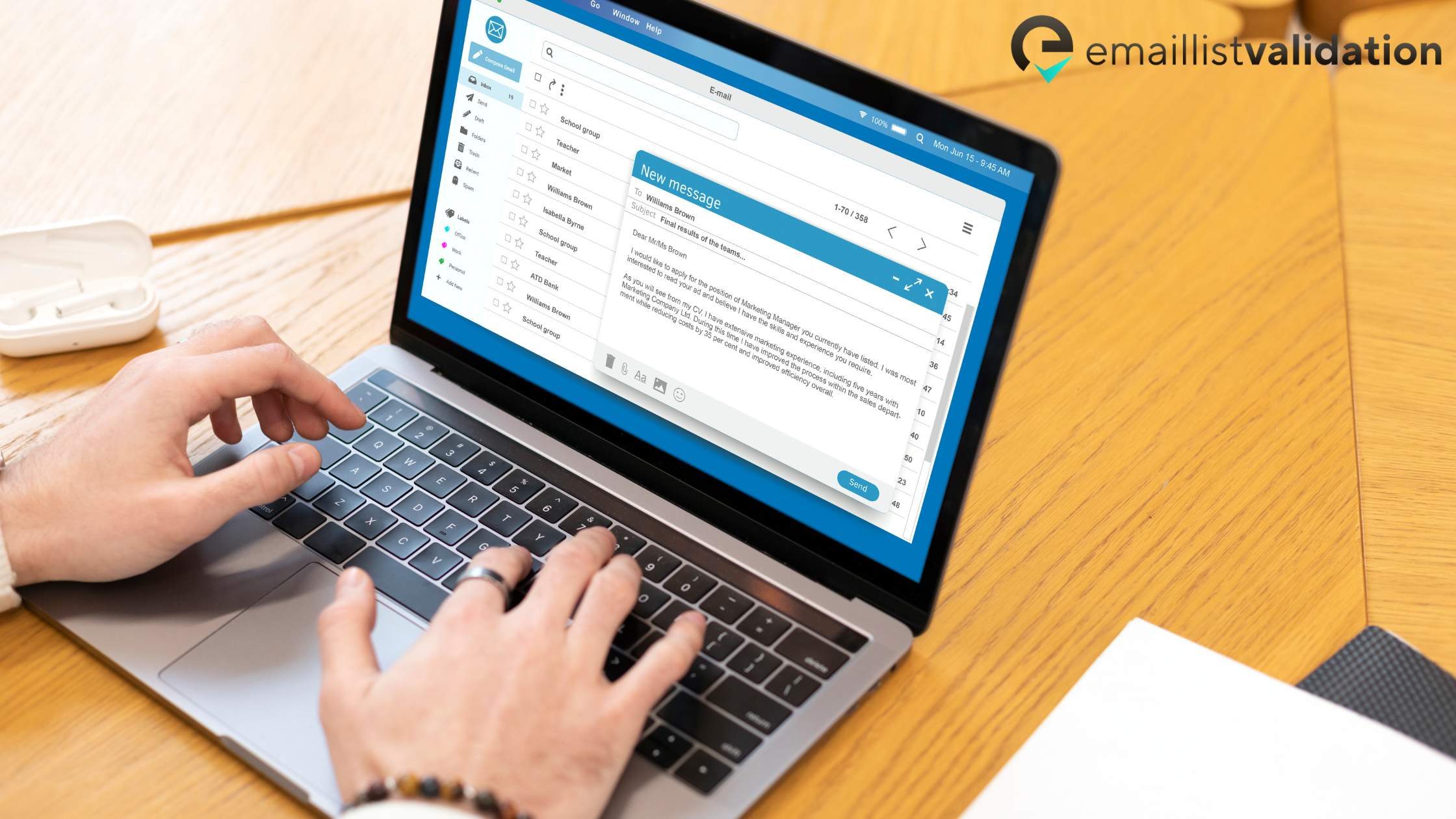The process of validating the authenticity and validity of an email address is known as email validation. It is an essential step in email marketing, lead generation, and customer relationship management since it ensures that messages are delivered to legitimate, active email addresses. In today's digital age, where businesses rely significantly on email communication, it is essential to maintain an up-to-date email list in order to avoid wasting resources by sending messages to non-existent or inactive email addresses.
In this article, we will explore everything related to email validation, from understanding email addresses to how can you check if an email address is valid.
Understanding Email Addresses

What is an Email Address?
An email address is a unique identifier used to send and receive electronic mail messages, commonly known as email. It is divided into two parts: the local part (username) and the domain part, which are separated by the "@" sign. Email addresses enable users to communicate with one another from anywhere in the globe as long as they have an internet connection.
The Anatomy of an Email Address
An email address's anatomy normally consists of two major parts, a local part and a domain name:
- The local part is the name that comes before the "@" symbol and identifies the user's mailbox on the email server. It can contain alphanumeric characters, underscores, periods, and hyphens.
- The domain name is the part that comes after the "@" sign and identifies the email server that handles message delivery. It is made up of one or more segments separated by periods and usually includes a top-level domain (TLD) such as ".com," ".org," or ".edu."
Here are some standards formats of email addresses:
Types of Email Adresses:
- Personal email addresses: Basically used for personal communication and include the user's name or nickname in the local part.
- Business email addresses: Businesses and organizations use it to communicate with customers, employees, and other businesses. They usually include the name of the company or organization in the local part.
- Disposable email addresses: Temporary or throwaway email addresses are generated for short-term use and can be destroyed after a set amount of time. They are frequently used for online registrations, newsletters, and promotional mailings.
- Role-based email addresses: Used to identify a certain role or function inside an organization, such as [email protected] or [email protected].
- Group email addresses: Used to communicate inside a certain group, such as a team, department, or club. They frequently include a common name or word in the local component, such as [email protected] or [email protected].
Methods of Email Validation

There are several methods to validate an email address:
Method 1: Syntax validation
This method validates the email address format to ensure that it contains a valid username, domain name, and top-level domain (TLD).
How to Perform a Syntax Check?
Syntax check is a simple and straightforward process that can be done manually or with the help of online tools or email verification software. To perform a syntax check manually, you need to look at the email address carefully and ensure that it contains the following elements in the correct order:
- A username or mailbox name
- The "@" symbol
- The domain name
Additionally, you need to ensure that the email address does not contain any spaces or invalid characters. If you are using online tools or email verification software, you can enter the email address into the tool or software, and it will automatically perform the syntax check.
Benefits of Syntax Check
- A syntax check is a quick and easy way to verify the validity of an email address.
- It is a useful first step in the email verification process and can help filter out obviously invalid email addresses.
- It can be performed manually or with the help of online tools or email verification software.
Method 2: SMTP validation
is the process of confirming an email address's validity and availability by examining the email server to which it belongs. Simple Mail Transfer Protocol (SMTP) is the standard protocol for sending and receiving emails over the internet. This method entails sending a test email to the email address and determining whether or not it was successfully delivered to the recipient's mailbox.
How to Perform an SMTP Check?
To perform an SMTP check, you need to use an email verification software or online tool that supports SMTP verification. The tool will send a test email to the email address that is verified and then attempt to receive a response from the email server to confirm that the email address exists and is active. The software or tool will then provide a report indicating the verification status of the email address based on the response received from the email server.
Benefits of SMTP Check
- SMTP check is a highly reliable method for verifying the validity and availability of an email address.
- It directly communicates with the email server, which ensures that the email address exists and is active.
- It can identify email addresses that may be valid but not accepting new emails, which can help reduce the bounce rate of email campaigns.
- It can also help identify email addresses that are invalid or no longer in use, which can help improve the accuracy of email lists.
Method 3: Domain validation
Domain check is the practice of confirming the validity and the authenticity of the domain name linked with the email address. It entails reviewing the domain name's DNS (Domain Name System) records to ensure that it is correctly registered and not affiliated with known sources of spam or fraudulent activity.
How To Perform a Domain Check?
Domain verification can be done manually or with the use of online tools or email verification software. To run a manual domain check, check the domain name linked with the email address to ensure that it is properly formed and associated with a legitimate business or organization. You can also look at the WHOIS database.
Benefits of Domain Checks:
- Domain check is a quick and easy way to verify the validity and authenticity of the domain name associated with an email address.
- It can help identify email addresses that are associated with known sources of spam or fraudulent activity.
- It can help ensure that email campaigns are targeted at legitimate and trustworthy recipients, which can help improve the effectiveness of the campaign.
Method 4: DNS Check
A DNS check is a protocol for converting human-readable domain names into computer-readable IP addresses. A DNS check examines the health and configuration of a domain's DNS records. It checks to see if a domain's DNS records are properly configured, and if they aren't, it offers information about the problem that has to be fixed.
Benefits of DNS Check
- DNS checks can help identify DNS issues, such as incorrect or missing DNS records, that could be preventing users from accessing your website.
- A properly configured DNS can help improve website performance and reduce load times.
- By performing regular DNS checks, you can ensure that your website is always available and accessible to users.
Method 5: MX record validation
MX (Mail Exchange) records are a type of DNS record that indicates which server handles email for a domain. The practice of examining the health and configuration of a domain's MX records is known as an MX record check. It checks whether a domain's MX records are properly configured, and if they aren't, it provides information about the problem that has to be fixed.
Benefits of MX Record Check
- MX record checks can help identify email delivery issues, such as misconfigured or missing MX records, that could be preventing users from sending or receiving emails.
- A properly configured MX record can help improve email delivery performance and reduce delays.
- By performing regular MX record checks, you can ensure that your email services are always available and accessible to users.
Method 6: Disposable Email Address Detection
Disposable email address detection is the technique of recognizing temporary or disposable email addresses used by users to avoid giving out their personal or professional email addresses. These email addresses are often generated for one-time usage and are not associated with any permanent mailbox.
Benefits of Disposable Email Address Detection
- Disposable email address detection helps prevent spam and fraudulent activities by identifying and blocking email addresses associated with such activities.
- By preventing users from using disposable email addresses, data accuracy is improved, and businesses can trust the authenticity of the email addresses they collect.
- Disposable email address detection helps protect user privacy by preventing users from disclosing their real email addresses and personal information.
Work With an Email Validation Service

When choosing an email validation tools, there are a lot of factors you must consider:
Factor 1: Accuracy
Choose an email validation service that has a high accuracy rate in finding invalid or non-existent email addresses.
Factor 2: Speed
Aim for a service that can validate big lists of email addresses quickly.
Factor 3: Security
Verify that the email validation service has proper security measures in place to protect your data.
Factor 4: Cost
Compare the prices of several services and select one that fits your budget.
Factor 5: Integration
Choose a service that is simple to integrate with your existing software or systems.
Factor 6: Customer service
Check whether or not the service offers customer service and how responsive they are.
Factor 7: Reputation
Research the service's reputation in the industry by reading reviews and ratings.
Conclusion
Email validation plays an essential role in maintaining the health of an email list and making sure that email campaigns reach their significant targets. Email validation helps in reducing bounce rates, improves engagement rates, protects the sender’s reputation, and saves you time and resources. In this article, we showed you how can you check if an email address is valid for it is an essential process for every email marketing campaign that is seeking improvement and email marketing success.



